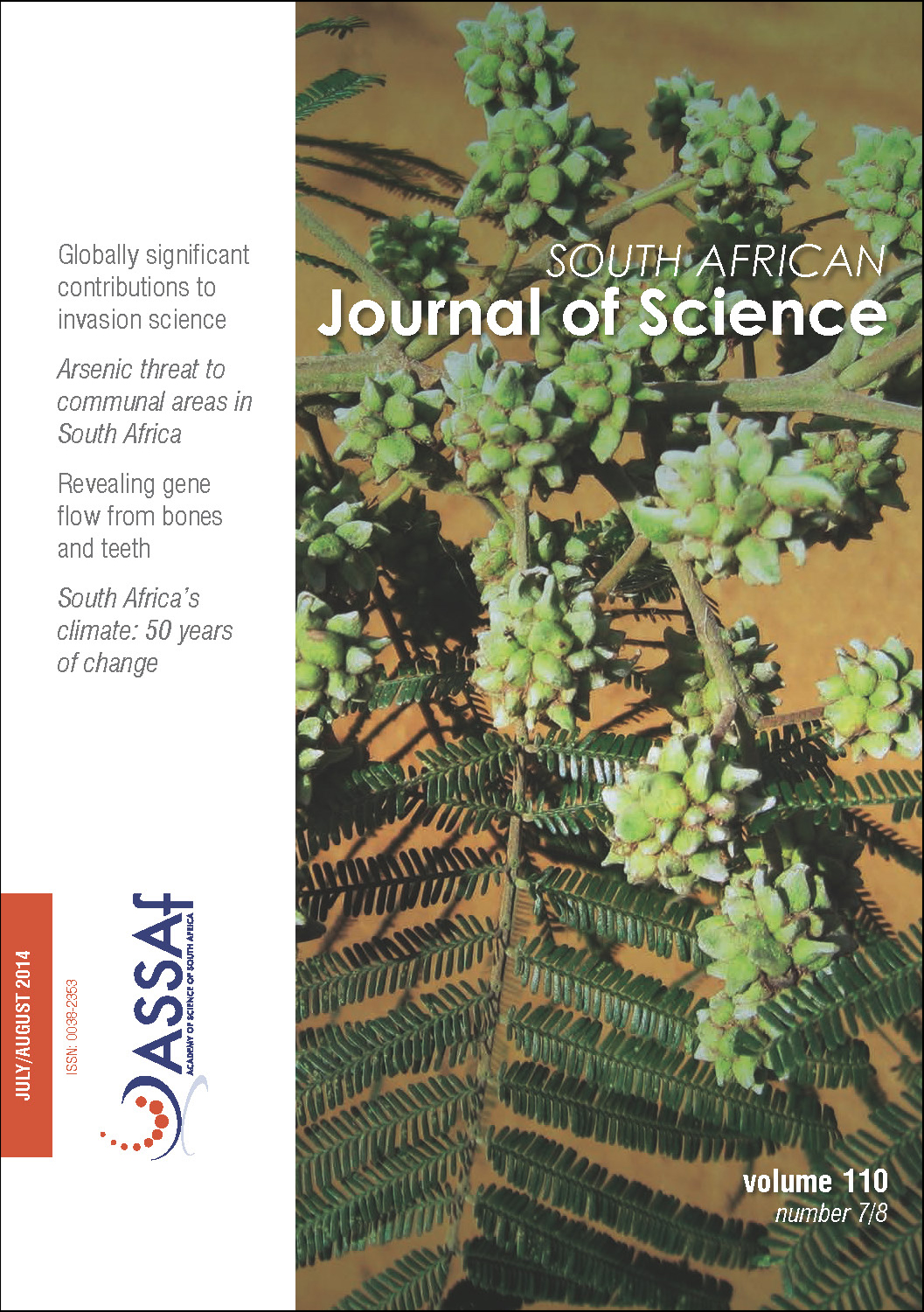Craniodental continuity and change between Iron Age peoples and their descendants
DOI:
https://doi.org/10.1590/sajs.2014/20130275Keywords:
dental anthropology, southern Africa, Bantu speakers, admixture, Historic CaveAbstract
The appearance of the Iron Age of southern Africa early in the first millennium AD is associated with the migration of Bantu speakers who were broadly ancestral to present-day Bantu speakers. While there is sufficient genetic, physical anthropological and cultural evidence to support general continuity into contemporary populations, the extent to which events since colonialism have affected morphological variation is poorly understood. We used dental anthropological techniques and three-dimensional craniomandibular metrics to examine biological relationships among Iron Age farmers, a historical 19th-century Ndebele sample and 20th-century Bantu speakers. We show that, although Iron Age and modern morphologies are generally similar, there are differences. Moreover, the historical sample falls between the precolonial and modern samples, suggesting increased genetic exchange from the 19th century onwards. These results suggest that recent historical events altered the genetic make-up of Bantu speakers and that, as a result, extrapolations from modern groups to the past should be done with caution as morphological variability is relative to historical context.
Published
Issue
Section
License

This work is licensed under a Creative Commons Attribution 4.0 International License.

All articles are published under a Creative Commons Attribution 4.0 International Licence
Copyright is retained by the authors. Readers are welcome to reproduce, share and adapt the content without permission provided the source is attributed.
Disclaimer: The publisher and editors accept no responsibility for statements made by the authors
How to Cite
- Abstract 407
- PDF 374
- EPUB 199
- XML 215













.png)